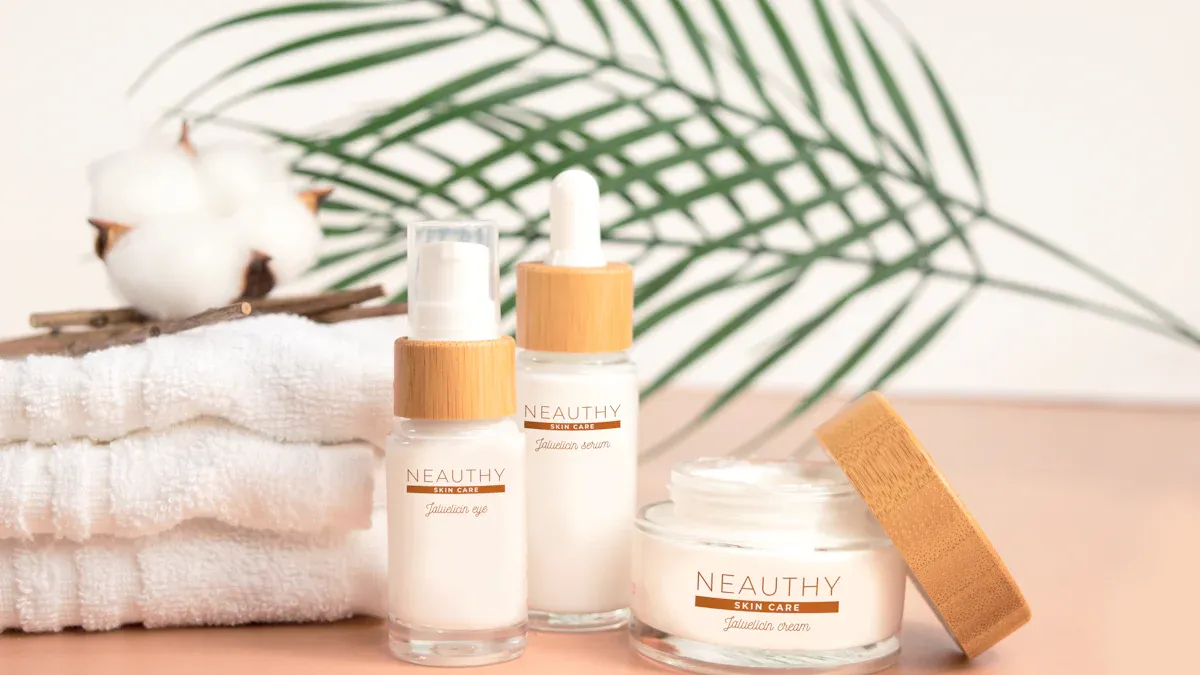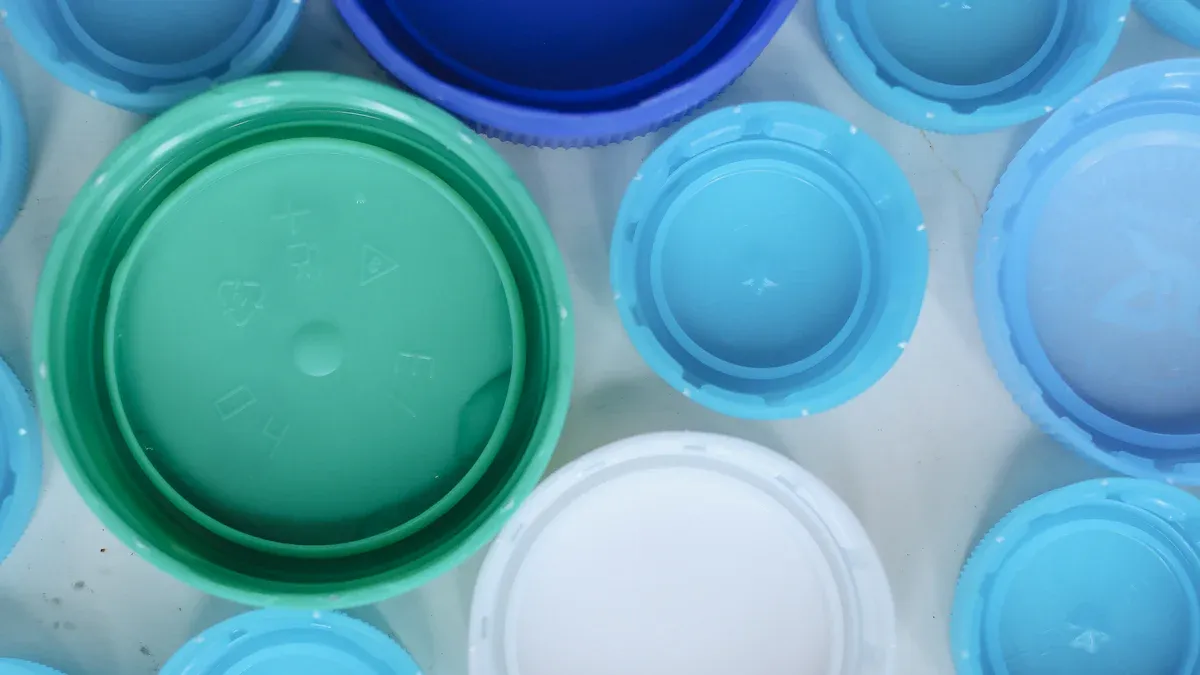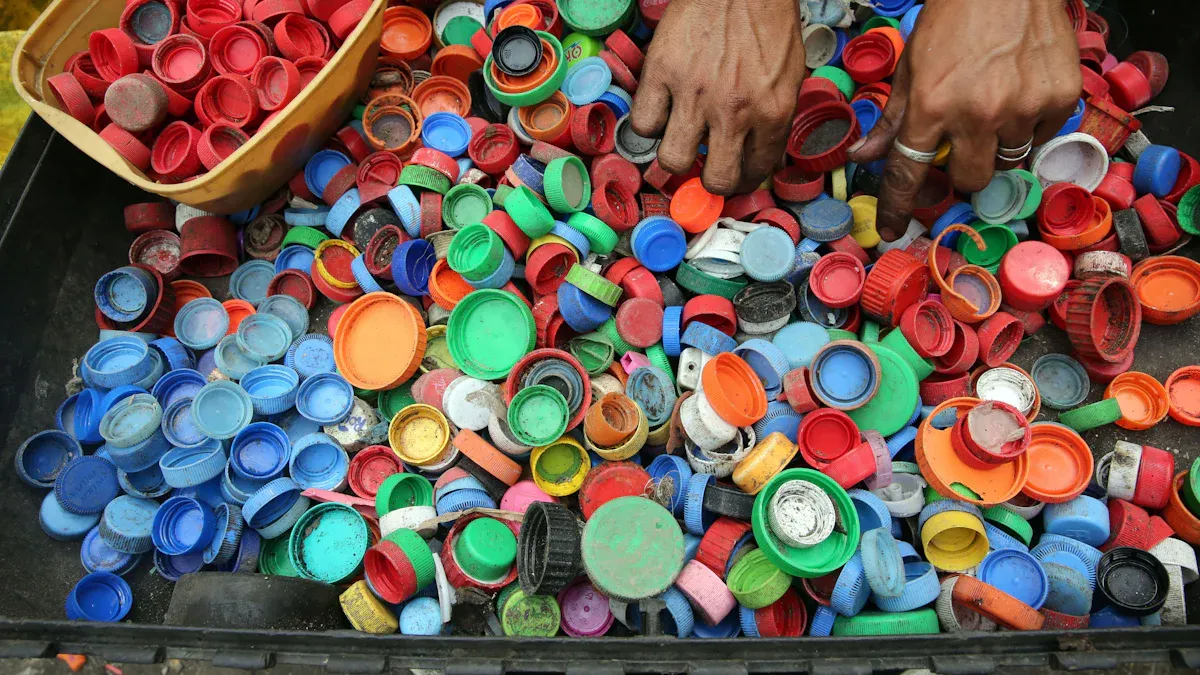Choosing Plastic Closures for Personal Care Products
Plastic closures are important for personal care product packaging. They keep products safe by blocking moisture and air, which protects the product from getting spoiled. The global market for plastic closures is growing fast and may reach USD 123.94 billion by 2033. These closures also make products easier to use, like flip lids on shampoos. Eco-friendly packaging is becoming more popular now, and recyclable plastic is a top choice for many brands. Picking the right plastic closure helps meet customer needs and supports the planet.
Key Takeaways
Plastic caps keep products safe from air and water.
Pick caps that match the product, are easy to use, and look good.
Use eco-friendly materials like recyclable or biodegradable plastics to help the planet.
Test caps with product ingredients to stop leaks and keep them clean.
Learn about new ideas like smart caps and 3D printing for better packaging.
Overview of Plastic Closures
Plastic closures are key for personal care packaging. They keep products safe, make them easy to use, and improve customer satisfaction. Knowing the types and features of closures helps you pick the best ones.
Types of Plastic Closures
Plastic closures come in many styles, each with a purpose. Here are some common ones:
Screw Caps: These are flexible and seal tightly. They work well for lotions and creams.
Flip-Top Caps: These are handy and allow one-handed use. They are great for shampoos and body washes.
Disc-Top Caps: These control how much product comes out. They are good for serums and oils.
Pump Dispensers: Pumps are perfect for liquids. They give exact amounts and are easy to use.
Snap-On Lids: These are simple and often used on jars and tubs.
Dual flap closures are becoming popular for hygiene reasons. Modular closures are also in demand as refillable packaging grows.
Features of Plastic Closures
When choosing closures, think about their main features. These features make sure they work well and look good.
Sealing Capabilities
Closures should stop leaks and keep products clean. This is very important for liquids to stay fresh and safe.
Dispensing Mechanisms
Good closures make products easy to use. Pumps give exact amounts, and flip-tops allow quick access.
Material Durability
Strong materials help closures last longer. This is needed for items opened and closed often.
Design and Aesthetic Appeal
Closures also affect how products look. Custom designs can match your brand and stand out on shelves.
Sector | Key Features That Matter |
|---|---|
Personal Care & Cosmetics | Easy dispensing, hygiene, and eco-friendly materials |
Environmental Sustainability | Lightweight and recyclable closures |
Market Growth Drivers | Demand for convenience and controlled product use |
By learning about these types and features, you can choose closures that fit your product and attract customers.
Choosing the Right Plastic Closures

Picking the right plastic closures keeps products safe and easy to use. It also makes them look good. Think about compatibility, how they work, and how they match your brand.
Compatibility with Product Ingredients
Chemical Resistance
Closures should not react with your product’s ingredients. Some formulas can damage certain materials. To prevent this, companies do tests like:
Checking if closures react with ingredients.
Testing how closures hold up over time in storage.
These tests help find closures that keep products safe and stable.
Stopping Leaks or Contamination
Closures stop leaks and keep products clean. They block air and moisture, which keeps products fresh. This is very important for liquids to stay safe and usable.
How Closures Work and Feel
Easy to Use
People like closures that are simple to use. Flip-tops and pumps make it quick to get the product. Dual flap closures are popular because they are easy for daily use.
Accurate Dispensing
Good closures give the right amount of product. This reduces waste and helps customers use the product correctly. Pumps and disc-top caps are great for this. Resealable closures are handy for larger products.
Looks and Branding
Custom Designs
Closures can show off your brand. You can pick colors, shapes, and finishes to match your product. A special design helps your product stand out.
Matching Closures with Packaging
Closures should match the package design. If they don’t, it might confuse buyers. For example, a modern pump looks great with a sleek bottle.
By thinking about these points, you can choose closures that work well and make customers happy.
Sustainability in Plastic Closures

Sustainability is very important in plastic closure design today. Brands can help the environment by picking eco-friendly options. Let’s see how recyclable plastics, biodegradable materials, and simple designs make a difference.
Recyclable Materials
Types of Recyclable Plastics
Recyclable plastics like PET and HDPE are common in closures. These plastics are strong and easy to recycle. Closures made from one type of plastic, called mono-materials, are becoming popular. They make recycling easier.
Benefits of Recyclable Closures
Using recyclable closures has many advantages:
Cuts down on new plastic use, lowering carbon emissions.
Supports systems where old closures become new ones.
Matches the trend for eco-friendly packaging in personal care products.
Lightweight closures use less plastic but still work well. They reduce waste and meet the demand for sustainable packaging. This helps both the planet and consumers.
Biodegradable and Compostable Options
New Sustainable Materials
Materials like PLA, which are biodegradable, are now being used for closures. These materials break down naturally and leave less waste. Though still improving, they can help reduce landfill waste. Using them shows your brand cares about the planet and attracts eco-friendly buyers.
Lightweight and Minimalist Designs
Using Less Material
Lightweight closures need less plastic but stay strong. This saves resources and lowers production costs. For example, thinner caps or smaller designs use fewer materials.
Cutting Carbon Emissions
Simple designs use less plastic and lower shipping emissions. Lighter closures need less energy to transport, reducing their carbon footprint. This helps meet sustainability goals and protects the environment.
By choosing recyclable, biodegradable, and simple designs, you can make closures that are eco-friendly and useful. These choices help the earth and appeal to customers who care about sustainability.
Challenges and Solutions in Plastic Closures
Leakage and Sealing Issues
Why Leakage Happens
Leaks happen when closures don’t seal containers well. Poorly fitting closures let air or liquid escape. Cracks or weak seals in materials also cause leaks. Extreme heat or cold can weaken closures and lead to problems.
Fixing Sealing Problems
To stop leaks, use closures with strong seals. Tamper-evident seals or liners add extra protection. Test closures in real-life conditions like temperature changes. High-quality materials last longer and prevent wear over time.
Compatibility Problems
Finding Compatibility Issues
Problems happen when closures react with product ingredients. Some chemicals can damage plastic, causing contamination or failure. Spotting these issues early avoids recalls and unhappy customers.
Testing for Compatibility
Solve these problems with proper testing methods, such as:
APR tests to check recyclability of closures.
Sorting tests to see how closures work in recycling.
Labs from the APR directory that specialize in these tests.
Thorough testing ensures closures work well and are eco-friendly.
Environmental Concerns
What Consumers Want
People want packaging that’s better for the planet. They prefer closures that can be recycled or made from green materials. Brands like Heinz have improved closures to make them easier to recycle. Teaching people how to recycle correctly helps reduce waste.
Moving to Eco-Friendly Closures
Switching to green closures needs teamwork with recycling groups. Lightweight and single-material closures make recycling easier. These changes help the environment and meet customer demands for sustainable products.
Expert Tips for Picking Plastic Closures
Testing for Compatibility
Why Testing Matters
Testing closures with your product is very important. Some ingredients can harm certain plastics, causing problems like leaks or damage. Testing helps you find closures that keep products safe and work well. For example, testing closures in different temperatures shows how they hold up over time.
Making Packaging Easy to Use
Focus on Convenience
People like packaging that’s simple to use. Closures like flip-tops and pumps make it easy to get the product and control how much comes out. Studies, like the redesign of Heinz Ketchup lids, show that easy-to-open closures make customers happy. Features like a good grip and smooth opening improve the experience.
Staying Updated on Trends
New Ideas in Plastic Closures
Learning about new ideas in plastic closures keeps you ahead. These updates improve how closures work, help the planet, and make products easier to use. They meet what customers want and support eco-friendly goals.
One big change is the use of intelligent closures. These closures use smart tools like RFID to track products. They help keep items safe and manage supply chains better. For example, they check if products are real, so customers get the right ones. This is very helpful for medicines and healthcare items.
Another cool idea is using 3D printing for special closure designs. This lets companies make unique shapes that match their brand. It also saves time and money, making it a good choice for all businesses.
In personal care, dual flap closures are becoming popular. They keep products clean and let users control how much they use. This makes them great for lotions and creams. Lightweight and mono-material closures are also common now. They are easy to recycle and better for the environment.
The table below shows important trends in different industries:
Industry Sector | Key Innovations and Trends |
|---|---|
Food & Beverage | Better packaging for sauces; no-spill designs. |
Personal Care & Cosmetics | Dual flap closures for hygiene; eco-friendly packaging. |
Pharmaceutical & Healthcare | Closures for safe dosing; focus on green packaging. |
Environmental Sustainability | Lightweight closures; mono-materials for easy recycling. |
Technological Advancements | Smart closures with RFID; 3D printing for custom designs. |
Market Growth Drivers | More demand for easy-to-use closures; rise of store brands. |
Regulatory Landscape | Rules for recycled materials and bio-based plastics. |
By following these trends, you can pick closures that fit today’s needs and get ready for tomorrow’s challenges.
Picking the right plastic closures is very important. They keep products safe, easy to use, and eco-friendly. Think about how they work with your product, how simple they are to use, and how they look. Sustainability matters too. Many brands now use biodegradable materials like PLA and PHA. These materials are strong but break down naturally. Reusable and refillable closures help cut waste and last longer. By choosing closures that work well and are good for the planet, you can meet customer needs and help the environment.
FAQ
What are plastic closures made of?
Plastic closures are made from materials like polypropylene (PP), polyethylene (PE), or PET. These materials are strong, light, and can be recycled. They help keep products fresh and safe.
How do I choose the right closure for my product?
Think about your product’s ingredients, packaging, and how users will use it. Test if the closure works well with the product and seals tightly. Pick a closure style that matches your brand for a complete look.
Are plastic closures recyclable?
Yes, many plastic closures can be recycled, especially those made from mono-materials like PET or HDPE. Check your local recycling rules to dispose of them correctly. Using recyclable closures helps the environment. ♻️
Can closures affect product shelf life?
Yes, closures are important for keeping products fresh. A good closure stops air, water, and dirt from getting inside. This helps your product last longer.
What are the latest trends in plastic closures?
New trends include lighter designs, mono-material closures for easier recycling, and biodegradable options like PLA. Smart closures with RFID are also becoming popular for tracking and safety.
Tip: Keep up with trends to make your packaging meet customer needs and eco-friendly goals.

